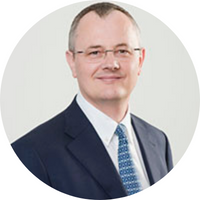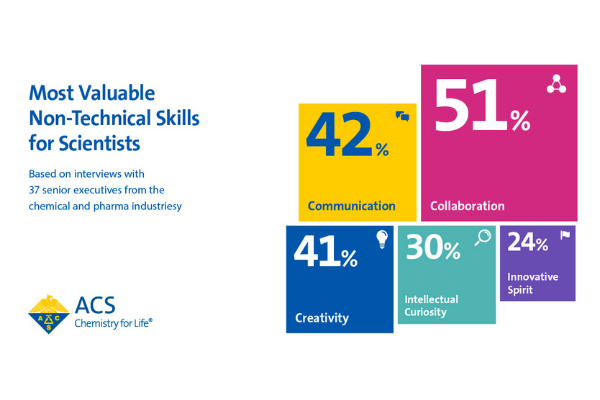
Key Takeaways:
- Nicolas Cudre-Maroux shares the technology trends he’s looking out for and how they will affect the industry
- Which of Solvay’s 15 markets is making the most significant advances in sustainable solutions
- What Cudre-Maroux wants his legacy to look like post Solvay
Among the scientists at Solvay, what non-technical skills do you most highly value?
Our mission is to create value by developing solutions for our customers. The technical competencies of our scientists are absolutely amazing. Focusing these competencies on the right projects requires marketing skills and, simply, the ability to ask the right questions and to listen to the answers from our customers. Great scientists who have the ability to do that and to connect with other people, scientist or not, are the real stars in our organization.
Chemists and chemical engineers operate in a dynamic and challenging industrial workplace. In light of this, what advice can you share to help them to continually improve and maximize their career prospects?
Based on what I said about competencies, my main advice to our researchers and engineers is to learn without any delay about data science, modeling, simulation and artificial intelligence.
We can have excellent chemists, physicists and engineers. We can have excellent data scientists and modelling experts. Chemists and engineers who will be able to combine their understanding of fundamental mechanisms with new digital tools will be in a unique position to excel.
What technology trends are you following most closely with an eye toward how they may impact the work of your scientists?
We follow all technologies that can play a significant role in our strategic markets related to clean mobility and resources efficiency. This includes polymers, composites, specialty chemicals, bio-based molecules, surfaces and interfaces engineering. In addition, process technologies, as well as catalysis, are critical enablers we cannot lose track of.
Finally, a major technology trend for our industry is not about WHAT we do but more about HOW we do it. Tools like modelling, simulation and machine learning are fundamentally changing the way we do research and will lead to massive improvements in the productivity of our researchers. Don’t get me wrong: These tools will be critical in the future, but will not replace understanding fundamental mechanisms of physics, chemistry and materials science.
Your company website lists 15 markets in which Solvay is active, along with an extensive portfolio of 264 Solvay brands. With so much to keep track of, how do you even begin to “… strike the right balance between keeping a strong core while also building from positions of strength to progress into new areas,” as Cabot Corporation SVP and CTO Patricia Hubbard put it?
The foundation of the right balance of a portfolio of innovation initiatives is a set of clear corporate strategic directions. The strategy we announced on November 7 is exactly that. It describes the mission of each of our businesses, as well as the markets we focus on. We have indeed a lot to keep track of, but the richness of our portfolio of technologies is a major source of potential synergistic innovations at interfaces between technology platforms.
Look, for example, at an area like thermoplastic composites: combining our composite technology with the broadest portfolio of high-performance thermoplastic polymers in the industry will lead to unique solutions in aero, oil & gas and auto markets.
In which of your 15 markets do you believe Solvay is making the most significant advances in terms of introducing sustainable solutions?
The first one that comes to my mind is the long list of light-weighting and energy saving solutions we are developing for everything that is in motion. As for a second example in the area of mobility, a major market we are active in is the one of Li-ion batteries, where we focus on developing the ingredients that will enable the level of performance, cost and safety required for future electric cars. Other examples of Solvay’s contributions to sustainable solutions are the development of bio-based polymers and surfactants.
What unique challenges do women chemists encounter in industry? What can the women - and the companies that employ - do to mitigate these challenges?
For the second time in my career, I work for an international chemical company led by a female CEO, Ilham Kadri (the previous time was in DuPont with Ellen Kullman as CEO). Both are perfect demonstrations that women have a bright future in our industry. Successful leaders like Ilham and Ellen will inspire all women at all levels to fulfill their dreams.
We all know that getting top talents and having a diverse organization is key to our future.
I do not think that the chemical industry has a really unique challenge in this area since all industries face this issue. In fact, our situation might be better than the one of some other industries because of the higher percentage of women in chemistry vs. other technical areas.
More generally speaking, in the specific case of innovation, diversity, in general and not only diversity in gender, along with inclusion are critical elements to build bridges between areas of expertise and, ultimately, develop unique solutions.
How did your parents influence your leadership style?
From a leadership point of view, my parents always told me that teams are more powerful than individuals and that great teams are made of diverse and complementary backgrounds. This remains one of my personal core values.
Both my father and my grandfather had great careers without having had the opportunity to study for university degrees. Both pushed me hard (this is an understatement!) to study but were also perfect demonstrations of what can be achieved with passion, dedication and willingness to take well-managed personal risks.
You spent many years at DuPont before joining Solvay. What experiences at DuPont were most helpful in helping you tackle your current challenges?
The first one that comes to my mind is related to the interface between R&D and Marketing. Innovation is all about creating value with new solutions to problems and the collaboration between technical and marketing is key to it. What I saw at DuPont in this area was top notch and had a big influence on my approach to making critical choices for our research portfolio.
A natural extension is about business models. During my 27 years at DuPont, I was involved in several projects related to generating value from different business models, for example in emerging markets. This experience keeps helping me challenge current business models with alternative ones.
How would you assess the job Solvay is doing to identify, develop and retain top research talent?
Scientists are driven by passion, curiosity and a strong sense of purpose. Because of its genuine commitment to science and its broad portfolio of technologies, Solvay has the benefit of a strong image among scientists. Building on that positive foundation, we developed a strong network of academic relationships that gives us the right access to scientific talents. Our balance between science and applied research, as well as our ability to provide diverse assignments to keep stretching top talents, are critical contributions to our excellent retention rate.
When you leave Solvay, what would you like your legacy to be?
Bringing science and research close to markets and customers is critical to high quality innovation. In addition, connecting people from different backgrounds to solve a problem is amazingly rewarding.
This is all about collaboration: I would like to be remembered for having developed an environment driving collaboration across the company and with its partners and customers.
We’re putting you in charge of the International Olympic Committee. You have decreed that rather than rotate, the next five Winter Olympics will be held in one location. Where are you putting them, and why?
For sustainability reasons, I would only consider selecting a location among the ones where the Winter Games already took place and where the infrastructure is still available. In addition, to avoid issues, I would favor a neutral country. If I tell you that I come from Switzerland, I think that you will guess where I would organize them!

Nicolas Cudré-Mauroux is the Chief Technology Officer at Solvay and is in charge of Research & Innovation across the Group. Nicolas spent the first part of his career with DuPont, starting in 1988 as a researcher at the Experimental Station, DuPont’s central research facility in Wilmington, Delaware (USA). Until 2006, he has held a range of R&D, technical, marketing and new business development leadership roles in the United States, Canada and Europe.
In 2006, Nicolas was named Regional Business Director for the Advanced Fibers Systems and Nonwovens businesses in EMEA. In 2011, he joined the DuPont-Danisco integration team and, in 2012, moved to Denmark to become the Technology & Innovation Director for the food ingredient business that DuPont formed following this acquisition. In 2015, Nicolas joined Solvay where he focuses on maximizing the impact of Research & Innovation investments. He is based at the corporate headquarters in Brussels, Belgium. Nicolas has a broad range of expertise, like but not limited to materials science, polymers, composites, food technology and bio-technology. He is passionate about innovation management, focusing specially on value creation at the interface between R&D and markets. He is a member of the Royal Academy of Belgium, of the Board of Directors of CNRS (France) and of the Board of Governors of the Argonne National Lab (US). In 2019, he received the “European CTO of the Year Award” from EIRMA. Nicolas is Swiss and was born in Luxembourg. He has a MS and a PhD in Materials Science from the Swiss Institute of Technology (EPFL) in Lausanne, Switzerland.
This article has been edited for length and clarity. The opinions expressed in this article are the author's own and do not necessarily reflect the view of their employer or the American Chemical Society.
Copyright 2019 American Chemical Society (All Rights Reserved)








